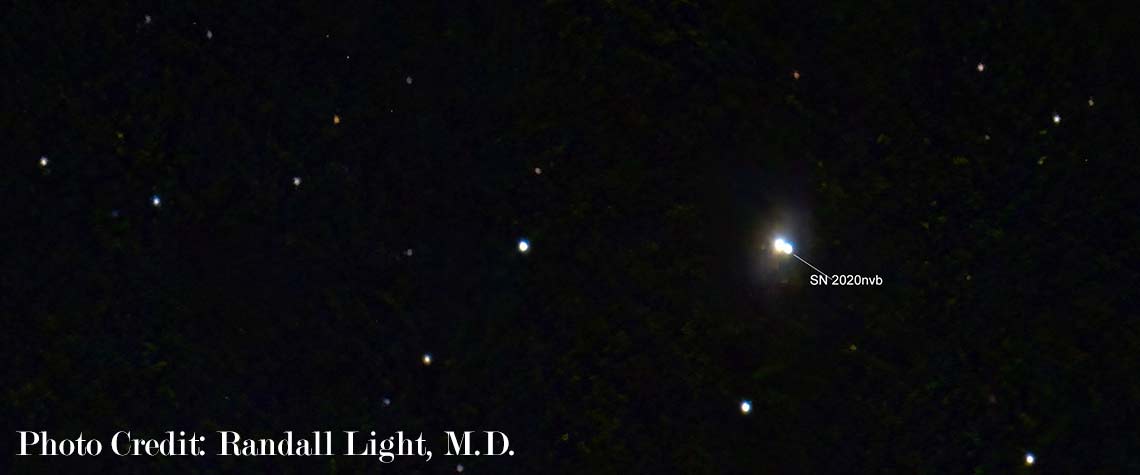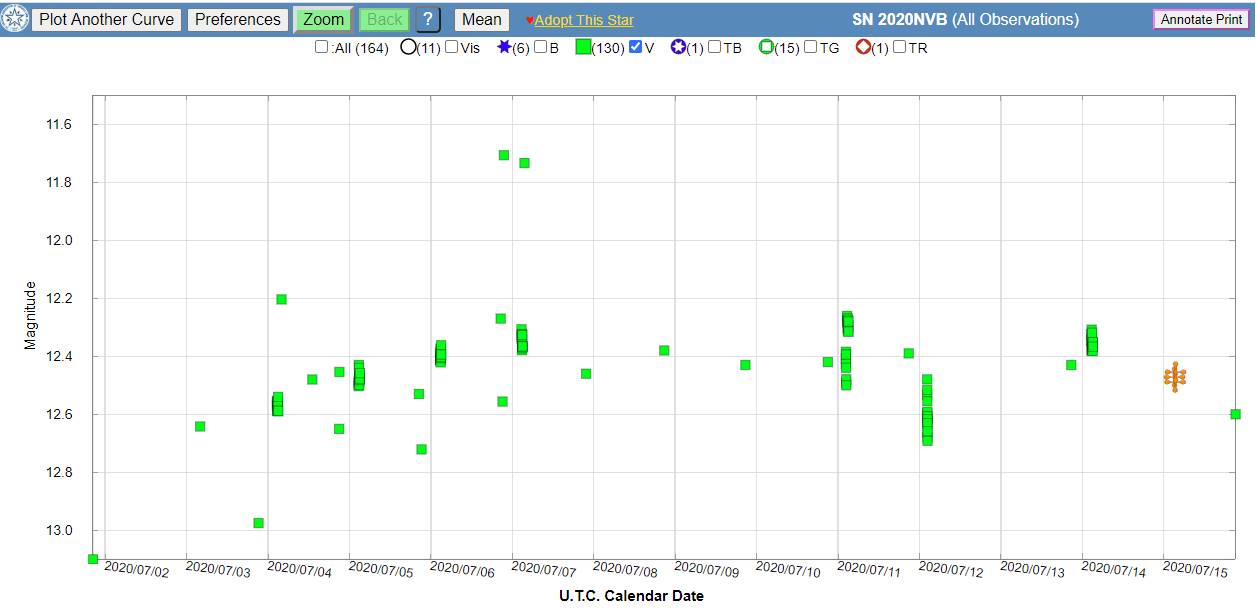Page 5


Light Curve for the Super Nova in NGC 4457
By Mark Spearman
I recently observed the M 4457 SN and used my observations to calculate the brightness and confirmed it with AAVSO, the American Association of Variable Star Observers. I calculated the brightness of the M 4457 SN to be around 2 billion times the sun's brightness.
We would not want to be too close! Earth and Sky cite the safe distance to be between 50 and 100 light years. There are, apparently, no type II supernova candidates within that range. But Type Ia supernovae require a white dwarf star to orbit a large star like a red giant and to draw off its mass over a period of time. When enough mass accumulates on the dwarf star that it can no longer support it with radiation, it collapses and creates a type Ib supernova (at least, that has been the theory; no one has watched this yet). And we really don't know how many of these type systems are within 100 light years.
Below is the light curve for the super nova in NGC 4457. The little crosses are my observations. It appears to be dimming now. The green squares are observations by other observers. As you can see, there is some discrepancy. But it is fun all the same.
Observations are sent to AAVSO, American Amateur Variable Star Observers (aavso.org). It is a lot of fun and they take all sorts of observations, including visual observations. It started with Pickering at Harvard in the early 20th Century trying to get more people to report on variable stars.
The book, "The Glass Universe" by Dava Sobel is an excellent story about how AAVSO got started and about the wonderful women "computers" who measured the brightness from glass plates.
